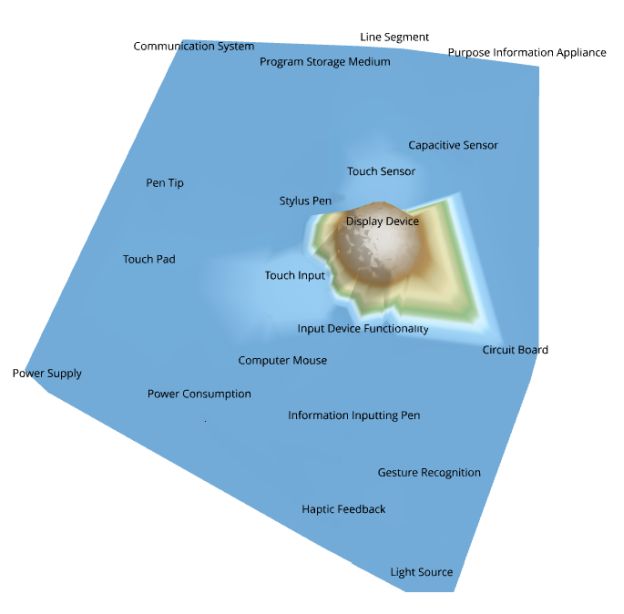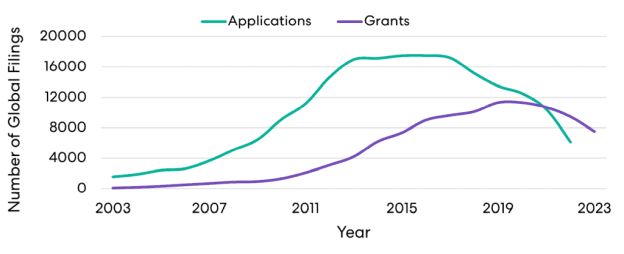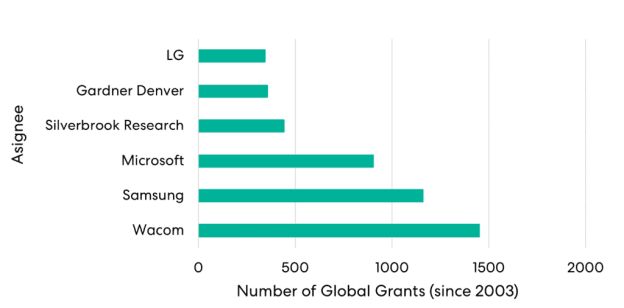In the late 1880s, Elisha Gray was locked in a battle with Alexander Graham Bell over who invented the telephone. It's not much of a spoiler to say that Elisha lost that battle, but he was a man of many talents. One of Gray's other inventions was the Telautograph, which would allow "one to transmit his own handwriting to a distant point over a two-wire circuit", and for which Gray was issued a US patent. While perhaps not as influential as the telephone, this invention was a precursor to many other developments, including the fax machine and the subject of this article, the graphics tablet.
Graphics tablets convert hand-drawn inputs into data and are the paintbrush of choice of many digital artists. Their popularity is growing in other industries too, as they are increasingly used as an alternative to keyboards and mice, particularly in countries whose languages are not easily compatible with standard keyboard interfaces (such as languages that use Chinese, Japanese, and Korean characters). Indeed, a SkyQuest Technology report predicts that by 2028, the graphics tablet market will be valued at a blistering 1.197 billion USD.
Given the size of the industry and the investment it has attracted, it would be expected that companies funding the research and development of graphics tablets will be seeking to protect the resulting intellectual property (IP). Figure 1 illustrates the inventions relating to graphics tablets for which patents are being applied for. It can be seen from this figure that there is a particularly large interest in protecting the IP behind display devices, specifically, in comparison to other technology incorporated in graphics tablets, such as pen tips or touch pads.

Figure 1: 3D concept map of inventions relating to graphics tablets for which patents are being applied for.
Source: RWS
Regarding filing trends, the graph in figure 2 shows the number of patents being applied for and granted over the last two decades for inventions falling in categories relating to graphics tablets (e.g., digitizers, control and interface arrangements, pens and stylus, etc.). As expected, we see growth in the numbers of patents and patent applications being filed each year in the period of 2003-2013. However, fewer patents and patent applications appear to have been filed in recent years, which is surprising given the fact that the industry itself continues to grow.
A potential explanation for this trend is the impact of COVID and recent economic downturns on the industry – many companies across the world have reduced their IP and R&D budgets over the last few years in order to stay afloat. However, another possible explanation is that we are seeing the end of a particular technology cycle. That is, the technology of more recently developed graphics tablets may not fall under the categories on which our search was focused.

Figure 2: The number of patents and patent applications for inventions relating to graphics tablets filed in the period of 2003-2023. The inventions have at least one of the following CPC codes: G06F3/038, 03545, 0383, 041, 0416, 04162, 044, 0441, 0442, 0446, 046.
Source: RWS
The graph in figure 3 identifies companies who have been assigned granted patents for inventions relating to graphics tablets (specifically, inventions relating to multi-touch and multi-sense digitizers) in the period of 2003-2023. Wacom, who is a household name in the industry, was found to be the assignee with the largest number of granted patents for such inventions. Perhaps the popularity of Wacom tablets (both with professional and amateur artists) stems from the technological innovations this company has the exclusive right to use?

Figure 3: The number of patents assigned to companies for inventions relating to graphics tablets in the period of 2003-2023. The inventions have at least one of the following CPC codes: G06F3/03545, 03546, 04162, 0441, 0442.
Source: RWS
It will be interesting to see how the graphics tablet industry progresses in coming years. The accessibility this technology provides suggests we may see more graphics tablets being used at home and in the workplace for purposes other than digital art. What's more, the emergence of generative AI art is undoubtedly going to impact the digital art industry. Perhaps we will see increased prevalence of graphics tablets as people become more exposed to digital art and grapple to harness this powerful technology. Certainly, we should expect to see continued innovation in the industry.
The content of this article is intended to provide a general guide to the subject matter. Specialist advice should be sought about your specific circumstances.

